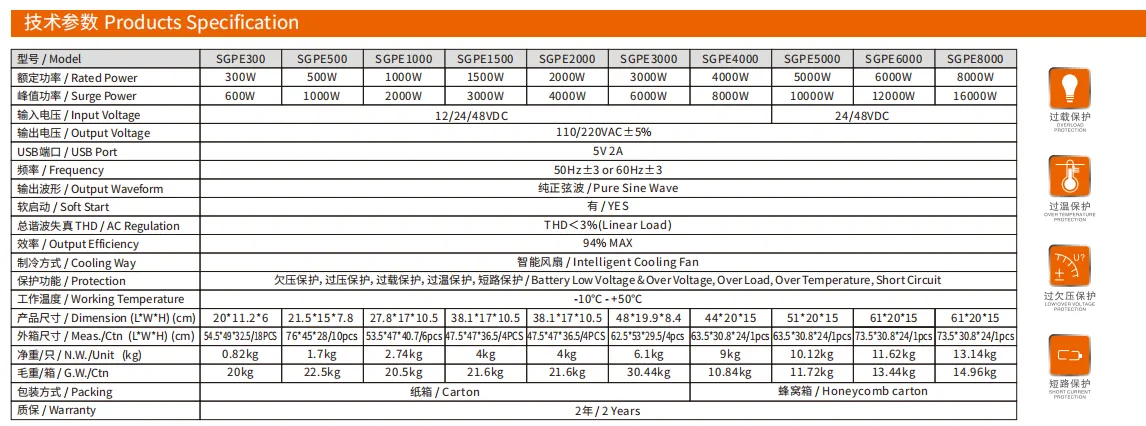Trends and Costs of Solar String Inverters for Renewable Energy Systems
Understanding the Price Dynamics of Solar String Inverters
In recent years, the renewable energy sector has witnessed remarkable advancements, particularly in solar technology. Among the critical components that facilitate solar energy conversion are solar string inverters. These devices play a vital role in optimizing the performance of photovoltaic (PV) systems, converting the direct current (DC) generated by solar panels into alternating current (AC) suitable for household use or for feeding back into the grid. As the demand for solar energy increases, so does the interest in understanding the pricing of these essential components.
What Influences the Price of Solar String Inverters?
1. Technology and Efficiency The efficiency of an inverter directly impacts its price. Higher-efficiency models often come with advanced features, such as better thermal management and superior energy conversion capabilities. This innovation comes at a cost, reflecting in the overall price of the inverter.
2. Power Rating Solar string inverters come in various power ratings, typically ranging from 1 kW to 60 kW. In general, the price tends to increase with higher capacity, as these models are designed to handle larger solar arrays and accommodate more significant energy demands. The investment in a more potent inverter can lead to higher long-term savings through increased energy production, making it an attractive option for many users.
3. Brand Reputation Like many other consumer products, brand reputation plays a crucial role in inverter pricing. Established brands with a track record for reliability and performance often command higher prices. Consumers are willing to pay a premium for brands that offer warranties, customer support, and a proven history of performance to ensure their investment is protected.
4. Market Trends and Supply Chain Factors The solar industry is affected by various market dynamics, including supply chain issues, tariffs, and global demand. Events such as trade regulations can influence component availability and costs, subsequently impacting inverter prices. In recent years, the increase in demand for solar energy solutions has created a competitive market, leading to fluctuations in pricing as manufacturers strive to secure their place.
solar string inverter price

5. Additional Features Modern solar string inverters often come equipped with additional features such as built-in monitoring systems, smart technology for optimized energy management, and robust safety measures. These features enhance user experience and system performance but contribute to the overall cost of the inverter. Therefore, when assessing prices, it is vital to consider what additional functionalities could offer value in the long run.
Current Pricing Trends and Projections
As of late 2023, the average price of solar string inverters can vary widely, ranging from $1,000 to over $3,000, depending on the factors mentioned above. However, the trend has shown a gradual decline in prices due to technological advancements and increased competition within the market. As more manufacturers enter the space and invest in research and development, consumers are likely to benefit from more affordable options without compromising quality.
Looking ahead, the price of solar string inverters is expected to continue trending downward, albeit at a slower rate. Innovations such as integrated energy storage solutions and smart grid compatibility may dictate the future pricing structure, creating opportunities for solar installations to become even more efficient and user-friendly.
Conclusion
The price of solar string inverters is influenced by a myriad of factors, including technology, capacity, brand reputation, market trends, and additional features. Understanding these dynamics is crucial for consumers and businesses seeking to invest in solar energy solutions. As the industry evolves, continued research and developments will likely lead to more cost-effective options, further enhancing the accessibility of solar energy for a broader audience. This transition towards renewable energy not only benefits the environment but also represents a significant economic opportunity in the years to come.
-
Unlocking Energy Freedom with the Off Grid Solar InverterNewsJun.06,2025
-
Unlock More Solar Power with a High-Efficiency Bifacial Solar PanelNewsJun.06,2025
-
Power Your Future with High-Efficiency Monocrystalline Solar PanelsNewsJun.06,2025
-
Next-Gen Solar Power Starts with Micro Solar InvertersNewsJun.06,2025
-
Harnessing Peak Efficiency with the On Grid Solar InverterNewsJun.06,2025
-
Discover Unmatched Efficiency with the Latest String Solar InverterNewsJun.06,2025







